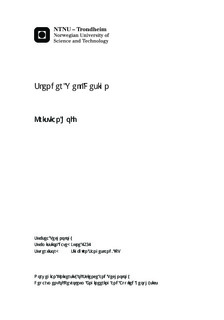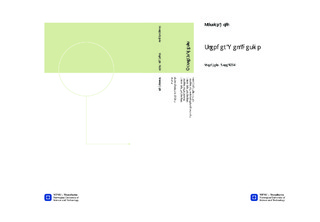| dc.contributor.advisor | Sangesland, Sigbjørn | nb_NO |
| dc.contributor.author | Hoff, Kristian | nb_NO |
| dc.date.accessioned | 2014-12-19T12:16:42Z | |
| dc.date.available | 2014-12-19T12:16:42Z | |
| dc.date.created | 2012-12-14 | nb_NO |
| dc.date.issued | 2012 | nb_NO |
| dc.identifier | 577083 | nb_NO |
| dc.identifier | ntnudaim:7671 | nb_NO |
| dc.identifier.uri | http://hdl.handle.net/11250/239905 | |
| dc.description.abstract | This thesis has proposed a slender well concept for exploration drilling with 15000 psi pressure rating based on enabling technologies. The main findings relates to the use of expandable liner hangers to reduce the required radial clearance between consecutive casing sections. Finite element analysis of the liner hanger expansion is performed in Ansys Workbench, a platform for advanced engineering simulations. The background for the thesis relates to the high cost of constructing offshore wells. There is a potential for considerable cost reduction by starting the well with a substantially smaller diameter, without compromising the final pipe size across the zone of interest. The topic builds on ongoing research in SBBU – Centre for drilling and wells for improved recovery, a joint project between NTNU, Sintef, University in Stavanger and IRIS. The slender well concept renders the possibility to use modified 3rd or 4th generation semi-submersible rigs. These rigs have significantly lower day-rates compared to new 5th and 6th generation rigs. Cost reduction is also expected with respect to consumption of steel for casing, drilling fluids and cement. Additional savings in steel is obtained by basing the casing program mainly on liners. The expandable liner hanger of choice is based on the XPak liner hanger developed by TIW. Finite element analysis indicated that a pressure rating of 15000 psi is feasible with the proposed liner hanger system. To avoid reduction in burst and collapse rating, the expansion mandrel is retained in the liner hanger after expansion. The mandrel is designed such that it creates an internal flush design with the liner string. It is recommended to use metal-to-metal sealing to avoid communication around the liner top. The slender well is constructed with limited radial clearance between consecutive casing sections. The problem of high surge pressures during running in hole is overcome by introducing a surge protection system with an artificial inner annulus to displace drilling fluids. The concept of pre-installing a liner string in the surface casing is introduced to render the possibility of an additional casing section and reduction in riser ID. The concept is untested and further evaluation is recommended. For further work on the topic proper field testing is recommended to validate the reliability of the concept. An assessment of slender well production drilling is also recommended to fully exploit the potential in slender well design. More detailed analysis and testing is necessary to qualify the expandable liner hanger for 15000 psi. | nb_NO |
| dc.language | eng | nb_NO |
| dc.publisher | Institutt for petroleumsteknologi og anvendt geofysikk | nb_NO |
| dc.subject | ntnudaim:7671 | no_NO |
| dc.subject | MIUVT Undervannsteknologi | no_NO |
| dc.subject | Undervannsteknologi - Drift og vedlikehold | no_NO |
| dc.title | Slender Well Design | nb_NO |
| dc.type | Master thesis | nb_NO |
| dc.source.pagenumber | 92 | nb_NO |
| dc.contributor.department | Norges teknisk-naturvitenskapelige universitet, Fakultet for ingeniørvitenskap og teknologi, Institutt for petroleumsteknologi og anvendt geofysikk | nb_NO |

